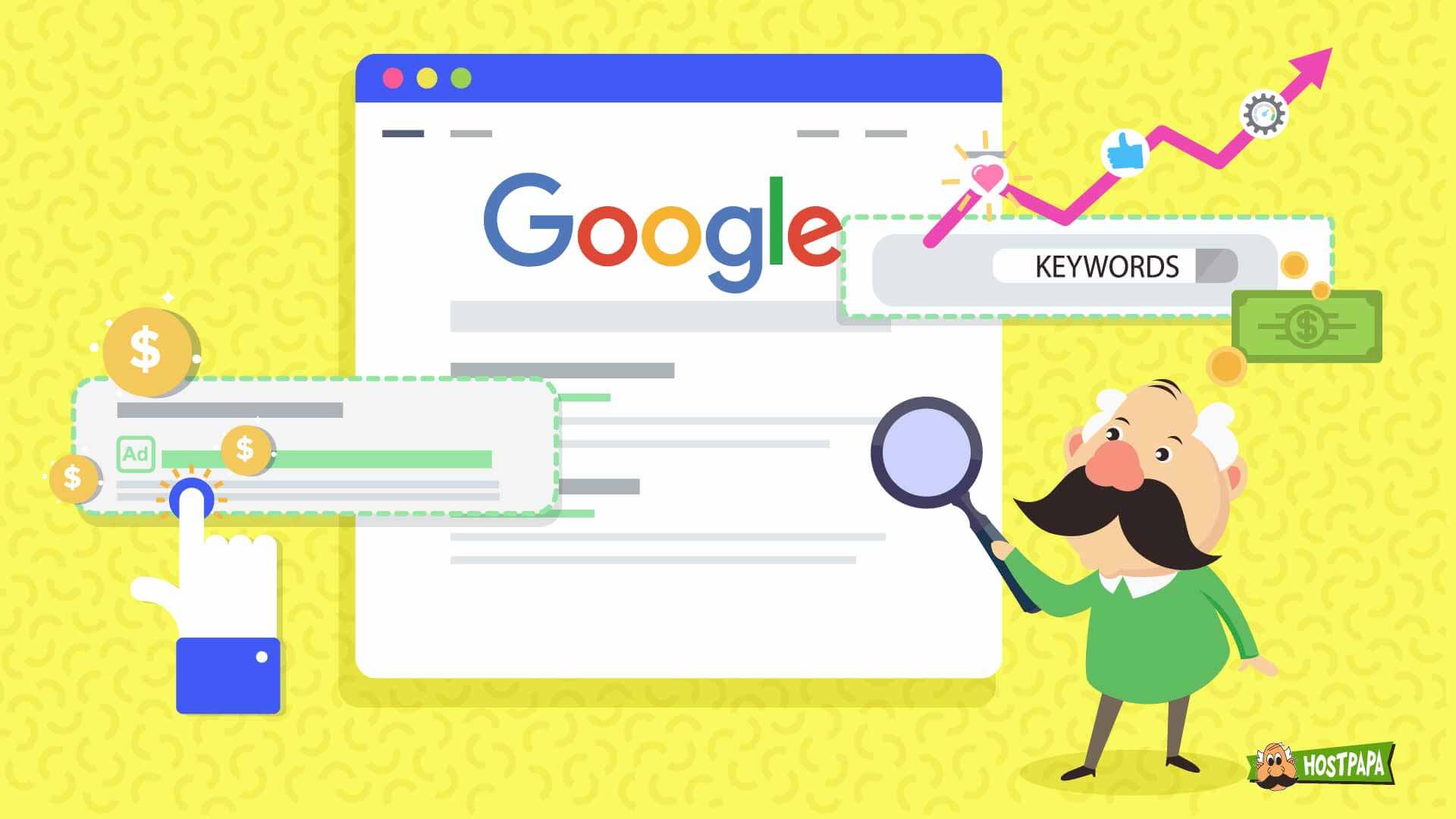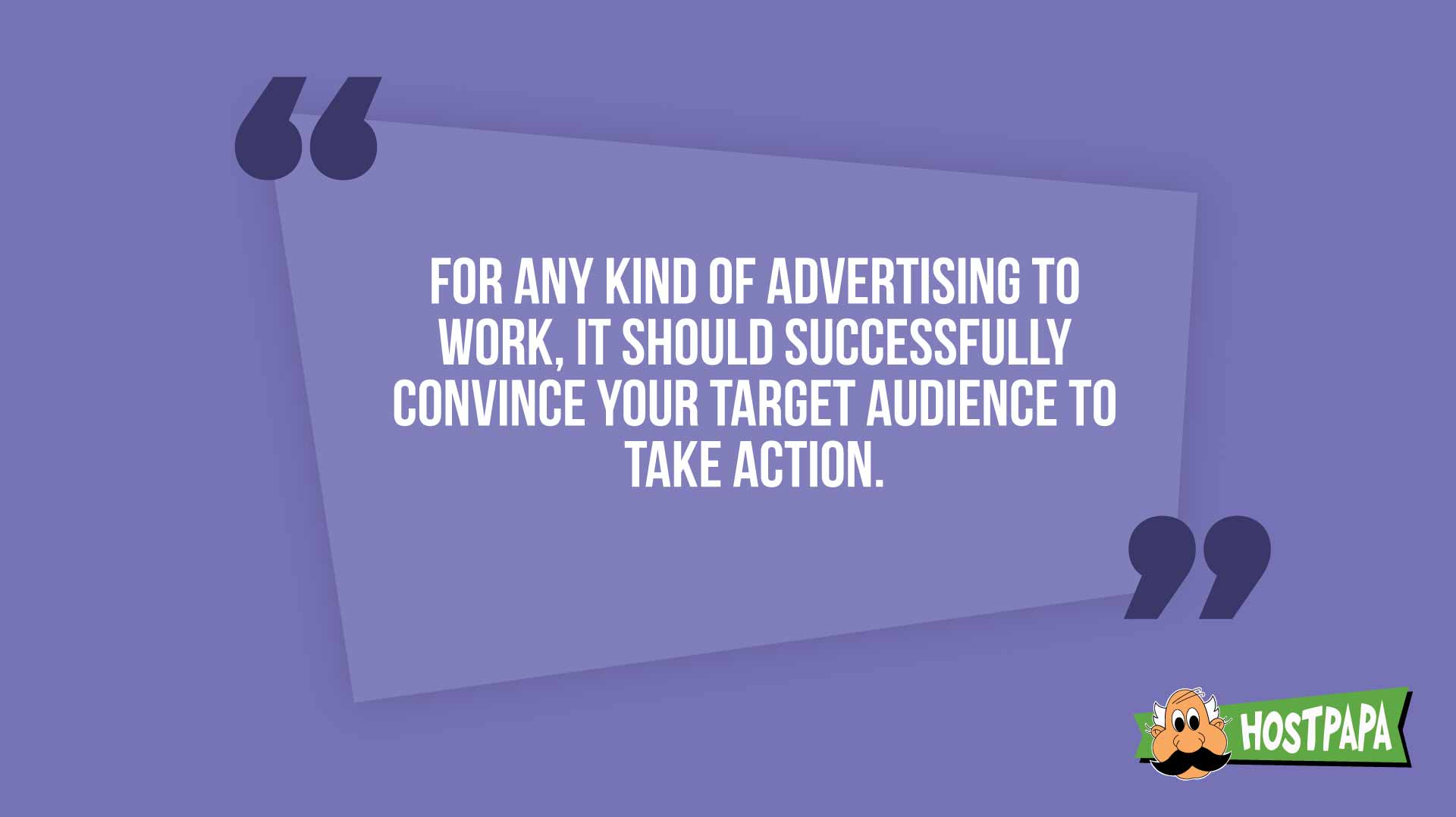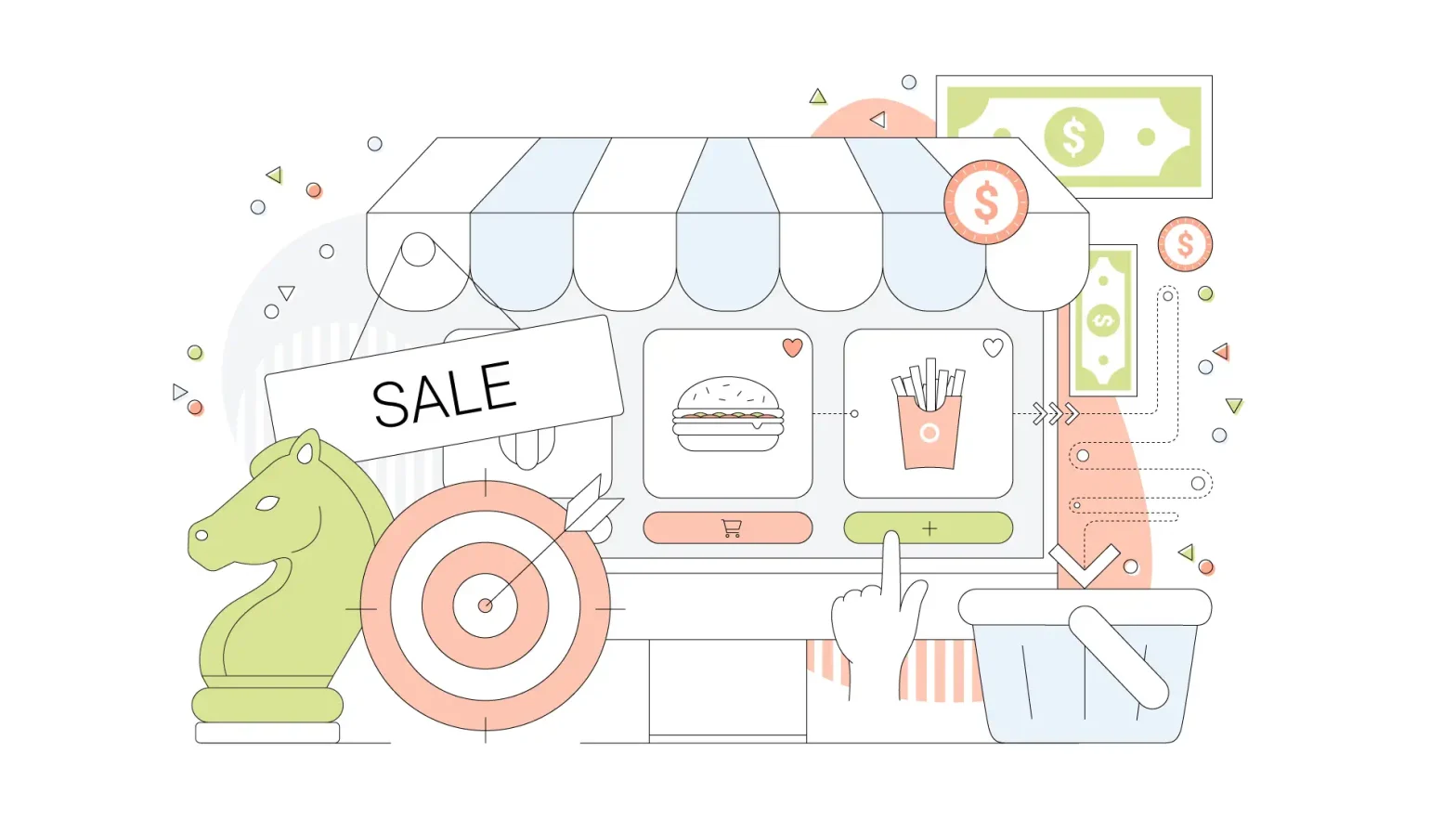If you are struggling to generate leads or to drive sales for your business, you should consider doing pay-per-click (PPC) or paid search advertising.
A survey by PPCHero states that 79% of brands say that PPC is a huge lead driver for their business.
It’s no wonder then, that the same survey suggests that 96% of marketers spend their money on paid search advertising.
The average American business earns $2 for every $1 they spend on Google AdWords, so it’s no surprise that paid search advertising, particularly on AdWords, is such an important part of marketing strategy for many businesses out there.
In this detailed guide, we’ll discuss why paid search advertising works so well and how you can take advantage of it by creating highly effective search ads. In addition, we’ll talk about the metrics you need to measure and other best practices.
Paid Search Advertising Goals
With any kind of advertising, there are usually two main goals:
- To generate leads
- To drive sales
For any kind of advertising to work, it should successfully convince your target audience to take action. The only way that’s going to happen is if that audience has the intent to buy what you’re advertising.
This is mainly what paid search helps you accomplish.
It connects your ads to those searchers who have the intent to buy what you’re selling.
For example, if you own an eCommerce store which specializes in football equipment, a search engine like Google will only show your ads to people who search for football equipment. Since they already intend to buy the products you are selling, there’s a high chance you’ll get the sale.
This is the reason why paid search ads are so effective.
It’s been proven in a study that visitors who click on paid search ads are 50% more likely to buy compared to visitors who come to your site organically.
But none of this happens magically.
Google does not decide by itself who should see your ad. You have to tell it. It’s your job to:
- Find out which keywords people are using when they search for the products and services you’re selling.
- Write compelling ad copy which will get people to click on your ad.
- Figure out how much you’re willing to spend to get in the top position on Google
… and more.
Once you create a great ad, optimize it with the right keywords and targeting, only then will Google be able to do its magic and show your ads to the right people.
Which Metrics Should You Measure?
In Google AdWords, you pay a small amount to Google every time someone clicks on your ad. This means you pay-per-click for your advertisements.
Most people think CPC (cost-per-click) is the most important metric to measure in your Google AdWords marketing campaign. Because, well… the cheaper each click is, the more clicks you can get for your budget. The more people click on your ads, the more sales can you make.
While that’s true and CPC is, indeed, important, it’s not the full story. There’s another metric which is highly relevant – and arguably more important – the quality score.
The quality score determines your final CPC. The higher quality score your paid search ads have, the lower your CPC will be. That’s why this is the metric you should pay the most attention to.

Image credit: Search Engine Land
Your quality score is calculated using these factors:
- CTR (Click Through Rate): Your click through rate is determined by the percentage of people who click on your ad from the total number of people who viewed your ad. So for example, if 1000 people view your ad, but only 50 people click on it, this means your CTR is 5%. And the higher your CTR is, the more engaging your ad is – and the more it will contribute to your quality score.
- Ad Relevance: You ads must include relevant keywords inside them which relate to the words your audience uses to search for your products. This will make sure your ads get shown to the most relevant audience, thus increasing your CTR.
- Landing Page Experience: Your ads will take visitors to a specific webpage. It’s your job to optimize your webpage and to make sure it fulfils the promises and claims you make in your ad. Making sure that your ad corresponds to your landing page will decrease your ‘bounce rate’ – which will contribute your quality score as well.
It’s important to note that while these definitely are the major factors which influence your quality score, they aren’t the only ones. Only Google knows which other factors its algorithms take into account when deciding the quality score.
Why Choosing the Right Keywords Is the Key to a Successful Ad Campaign
Before you can spend money on advertising, you first have to gauge whether there is any demand. This is business 101. In Google AdWords, you do this by checking out whether keywords related to your products or services get the most searches.
Let’s take the football equipments store example again.
Suppose you want to advertise a pair of sports shoes to football players. In this case, you’d want your ad to target those users who are footballers and are searching for shoes on Google.
To do that, you’ll want to optimize ads for the keywords your audience is using to search for your product, which in this case, is sports shoes for football players.

Image Credit: Keyword Tool
Here’s how you can find the relevant keywords:
- You can brainstorm a few keywords yourself, put them into Google’s free keyword planner, and see how many searches that particular keyword is getting. This, and its CPC rate, will help you better decide which keyword is being searched the most and will get your ad the most views.
- The second thing you can do is get inspiration from your main competitors. All you have to do is enter their website into a good SEO tool and analyze it to find out which keywords it is ranking for. You can also see which keywords they are using to rank their ads as well. This will give you enough ideas for keywords to target for your ads.
- Another way to find great keywords is to target ‘long-tail’ versions of them. For example, ‘football shoes’ has a high volume of searches making it a highly competitive keyword.
Instead, you can head over to the ‘searches related to’ section at the bottom of Google search results and find other relevant keywords that are long tail versions of yours. For example ‘football shoes for kids’ and ‘football boots adidas’ are long tail versions of the same keyword. They are likely to be more relevant and effective for your ad.
To actually find the right keyword for you ads, you’ll have to A/B test the same ad for different keywords and see which one gets you the most clicks.
The Components of a Paid Search Text Ad You Should Focus on
Type anything into Google, and you’ll notice that nearly every single ad that appears on top of the search results page is a text ad. There are no images, no graphics, and no videos involved.
This might lead you to wonder: how effective are these ads?
Well, the answer is very. According to Wordstream, the top three paid ads get 41% of all the clicks for keywords that have a commercial i.e. buying intent. And if people search for a specific product listing, the ads which appear in this case get 65% of all the clicks.
This is because for these keywords, ads take the majority of space, so that organic search results get pushed below the fold (not visible until you scroll).
Now that you understand how effective these text ads are, let’s take a closer look at the components each ad has that you should focus on.
1. Headline: The headline is bold and gets the most attention in the ad overall. You need to make sure it is compelling enough to stop the reader in their tracks.
The way you can do that is by quickly conveying your product’s benefits, explaining the ‘end result’ of your product / service, asking your readers a question to which they respond ‘yes’, or other copywriting tactics.
2. Description lines 1 & 2: The description lines 1 and 2 are there so you can reiterate the benefits of your product, showcase any offer or promotion, explain your unique selling point (USP) and more. Always keep it short and sweet.
3. Display URL: Don’t waste this space by putting in a random, numbered URL. Instead, create a custom URL which specifies the benefit of your product in its address. Moreover, it’s nice to have a simple URL. It helps people remember it in case they want to revisit your site in the future.
Don’t waste precious space talking about your company name. Unless it is renowned in your area, nobody cares about that. Instead, focus on stating key benefits of your product, which will make your ad much more compelling and persuasive.
But that’s not where you should stop.
In addition to focusing on the copy of your paid search ads, here are other things you should tinker with to improve the effectiveness:
- Bidding price: You might know that bidding higher will put your ads in a better spot in Google search results. But when you bid lower and take your ad to a lower spot, it might not have as much of a bad effect on your conversion rates, and can actually save you some money as well.
- Demographics: If your ad is targeted towards people in a large area, like your whole country or multiple countries, you should change that by targeting your ads to people in specific regions. This might very well increase your conversion rate.
- Time: The times during which your ads get shown matter a lot. Maybe the majority of your target audience searches for your products in the evening- Then, it doesn’t make sense to run your ads in the early morning, when you might or might not get any clicks.
The Importance of A/B Testing Your Ads
No matter how much of an expert you are, you won’t be able to create the perfect ad unless you A/B test the different aspects of it.
At the end of the previous section, we discussed how you can change your ad settings like demographics, bidding price, and time. A/B testing lets you take things one step further.
Using this technique, you can test multiple versions of a single ad by creating multiple copies of the same ad, each with one single variation in it. All in all, it is recommended that you create and test at least three variants of an ad at the same time.
Among the three, the one which gets the highest conversions can be declared the winner and the other two ads can be discarded.
Once you find the winner, you create another two variations again, this time, alternating another aspect of the ad which you hadn’t changed before.

Image Credit: Optimizely
Some common elements you can change in your ads are:
- The headline: Since the headline is the most viewed part of the ad, making changes to it can lead to improvements in the conversion rate.
- The copy: By making changes to the benefits and USPs written in your ad description, you can create more compelling ads, which may improve your ad’s engagement.
- Product images: Product ads on Google can now have images. By adding a more attractive and clearer image, you can improve your click through rate for that ad.
- The offer: An offer inside a paid search ad is basically the CTA (Call-to-Action). And the more attractive the CTA is, the higher the chances of you improving your ad’s conversion rate. So play around with the discount, pricing, and wordings of your offer to find the one that gets you the most clicks.
- Landing Page Copy: If a person clicks on your ad, goes to your landing page, but leaves almost immediately, it means they did not find what they wanted on your landing page. If this happens, work on your landing page copy, so that visitors don’t bounce.
These five are the main elements you should focus on when creating different variations to A/B test your ads.
Another major component of your ad, which you can A/B test, are keywords. What you can do is optimize your ads for different keywords which are related to the products and services you are advertising. This will also help you increase your conversion rate and / or improve your CTR.
Remember: this isn’t a one-off process.
Most of the time A/B testing is boring… and doesn’t yield immediate results. But with enough patience and determination, you’ll definitely find a variation of your ad that will bring you the best conversion rates.
Take the Time to Make Necessary Optimizations
So you’ve researched your keywords, written your ad copy, and have started A/B testing your ads.
Now what?
Now’s the time to make necessary optimizations that will take all your paid search ads to the next level. These optimizations include making tweaks to the keywords, filtering out negative keywords, and making changes to your device bids.
Choosing the Right Keyword Category
Once you pick the exact keywords and add them to your campaign, you get three options to choose how you want Google to show your ads for that particular set of keywords. These three choices are:
- Broad: This means your ads will be shown for the keywords you mentioned and also for any other search term Google thinks is relevant to that keyword. In this case, your ad will be shown to a larger group of people, but this also means they might not be in your target audience.
- Phrase: This is a slightly more rigid match. In this case, your ad will be shown when someone enters your desired keywords and also when someone enters a phrase which contains part of your keywords as well. This means your ads will be shown to a much more relevant audience while still filtering out irrelevant searches.
- Exact: Exact match is… well… exact. In this case, your ad will be shown in the search results only when people search using the keywords you mentioned specifically.
We recommend you remove the default match – broad and instead start by selecting the ‘phrase’ match. This is the safest option if you’re creating your first ad campaign. You can always test different variants of the same add by duplicating it and choosing a different match.
Filter Out Negative Keywords
The keywords you have set for your ads can mean different things for different people. If you’re selling football equipment and have created an ad to promote your store with a keyword match set to ‘broad’, you’ll want to filter out specific keywords which don’t match user ‘intent’ with what you’re trying to sell.
This means while someone searching for ‘football shoes’ should get shown your ad, a person searching for ‘football players’ or ‘football match’ should not.
If your ad is getting shown for irrelevant keywords, you can filter them out. All you have to do is enter the keywords which you don’t want your ads to appear for in the ‘negative keywords’ tab and let AdWords do the rest.
Make Changes to the Device Bid
Oftentimes you’re selling a product or service that’s viewed best on a specific device.
For example, if you’re selling a product that’s an everyday item, doesn’t cost too much and has a high turnover, you want it to be shown on mobile devices in addition to traditional computers and laptops.
In another case, you might not have a mobile-friendly website, so you won’t want to show your ads on mobile devices.
This is a setting you can change in Google AdWords and choose exactly which devices you want your paid search ads to get shown on.
Lastly, be sure your ad campaign type is selected to ‘search network only’ and not ‘display network’. That’s because display network ads are another thing altogether.
How to Create a Budget for Your First Ad Campaign
Often, when people create a budget for a paid search ad campaign, they approach it with the wrong mindset. Mostly, they create a budget by estimating the cost according to their ‘gut feeling’.
That’s the wrong strategy.
While that’s a reasonable way to get started, it shouldn’t be how you regularly set aside a budget for your ad campaigns. There are things you should factor in, such as conversion rate, CPC, and the profit margins on your products.
Let’s say, you sell suitcases online. Each suitcase costs $200 and you get $50 of profit for each one you sell.
You create a paid search ad advertising your suitcases. Out of a thousand people, fifty click on your ad, giving you a conversion rate of 5%. And let’s assume your CPC for this ad is $2. This means your campaign cost you a $100 dollars.
Of those 50 people who click on your ad, say 10 eventually buy your suitcase, netting you $2000 in sales revenue. And since each suitcase gives you a profit of $50, your total profit equals $500 dollars. Minus the $100 from your CPC, your total profit becomes $400 dollars.
Or, the CPC for your ad is $5 and the same 50 people click on your ad. In this case, you make sales, but you don’t get any profit. If your CPC exceeds the $5 price and your conversion rate stays the same, you actually lose money in your campaign.
This example above perfectly illustrates how you should budget for any paid search campaign. Look at your CPC and your conversion rate. Using that, you’ll be able to quickly figure out how much to spend on an ad campaign in paid search advertising.
Why Use Paid Search Advertising
If you don’t have a lot of time to spend building an audience, getting traffic, or increasing awareness of your brand, paid search advertising is the fastest way to drive sales and generate leads for your business.
Plus, while algorithm updates can cause you to lose your organic position in the Google search results, your paid search campaigns won’t be affected at all. Hence, it’s crucial for SaaS companies to take into account incorporating Google ads into their marketing strategy alongside their organic SEO tactics. This will guarantee a consistent flow of traffic and leads, as Google ads for SaaS companies remain unaffected by sudden algorithm updates that may result in a loss of organic search rankings.
And the best part?
A huge percentage of people don’t know the difference between paid searches vs. organic searches. Ad blockers don’t block Google ads by default. These two facts combined mean your paid search ads have a much better chance of getting shown to a wider audience than other forms of advertisement..
With the number of ad blockers increasing worldwide, it’s safe to say that paid advertising was, is, and will remain for the foreseeable future, one of the most effective marketing channels on the internet.
Are you using paid search ads? Have you tried out any special techniques? We’d love to hear about your experience in comments.









